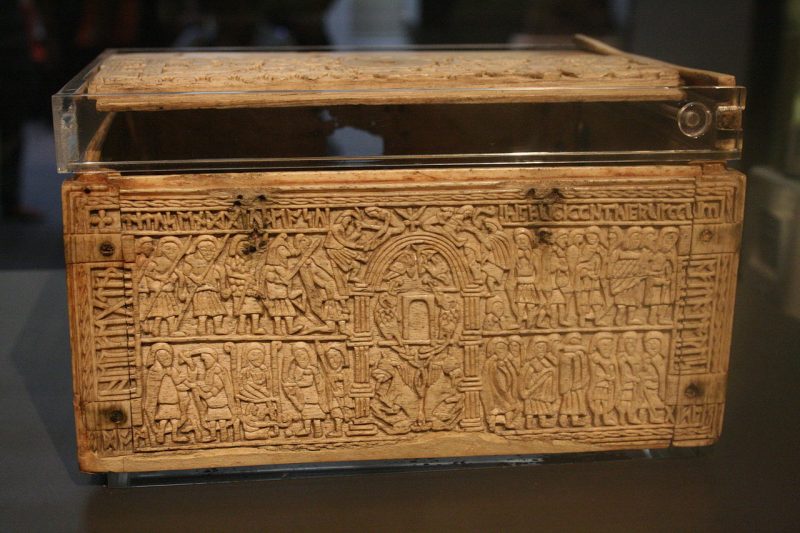The Franks Casket (or the Auzon Casket) is a small Anglo-Saxon whale’s bone chest from the early 8th century, now in the British Museum. The casket is densely decorated with knife-cut narrative scenes in flat two-dimensional low-relief and with inscriptions mostly in Anglo-Saxon runes.
Generally reckoned to be of Northumbrian origin,it is of unique importance for the insight it gives into early Anglo-Saxon art and culture. Both identifying the images and interpreting the runic inscriptions has generated a considerable amount of scholarship.
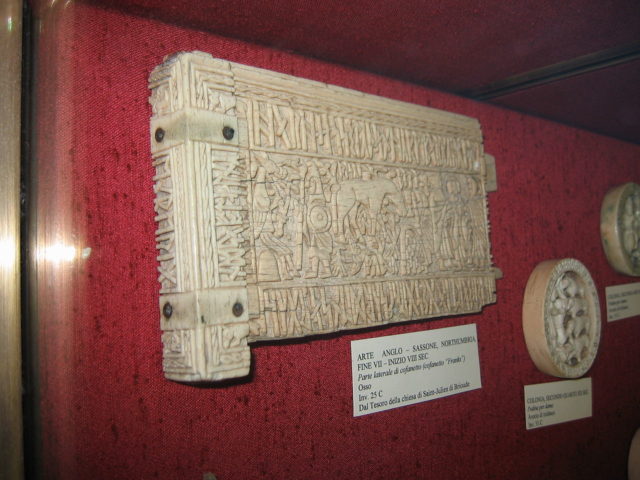
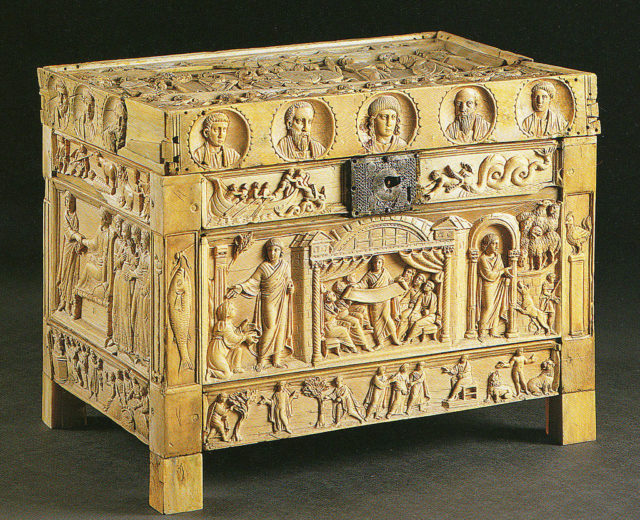
The imagery is very diverse in its subject matter and derivations, and includes a single Christian image, the Adoration of the Magi, along with images derived from Roman history(Emperor Titus) and Roman mythology (Romulus and Remus), as well as a depiction of at least one legend indigenous to the Germanic peoples: that of Weyland the Smith.
It has also been suggested that there may be an episode from the Sigurd legend, an otherwise lost episode from the life of Weyland’s brother Egil, a Homeric legend involving Achilles, and perhaps even an allusion to the legendary founding of England by Hengist and Horsa.
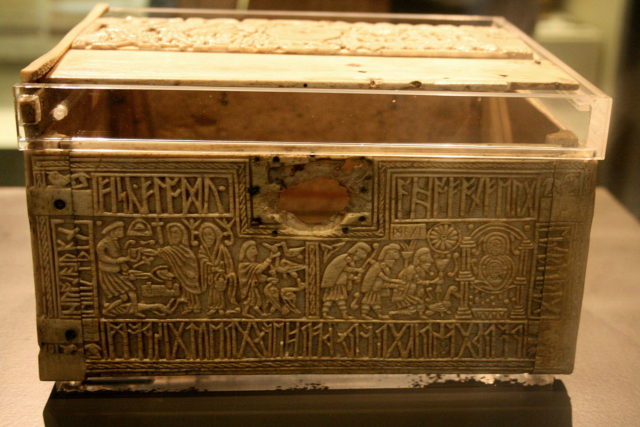
A monastic origin is generally accepted for the casket, which was perhaps made for presentation to an important secular figure, and Wilfrid’s foundation at Ripon has been specifically suggested, The post-medieval history of the casket before the mid-19th century was unknown until relatively recently, when investigations by W.H.J. Weale revealed that the casket had belonged to the church of Saint-Julien, Brioude; it is possible that it was looted during the French Revolution. It was then in the possession of a family in Auzon, a village in Haute Loire (upper Loire region) France. It served as a sewing box until the silver hinges and fittings joining the panels were traded for a silver ring.
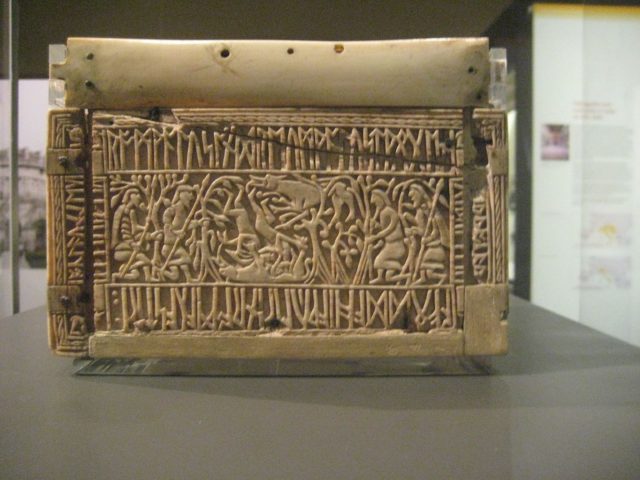
Without the support of these the casket fell apart. The parts were shown to a Professor Mathieu from nearby Clermont-Ferrand, who sold them to an antique shop in Paris, where they were bought in 1857 by Sir Augustus Wollaston Franks, who subsequently donated the panels in 1867 to the British Museum, where he was Keeper of the British and Medieval collections. The missing right end panel was later found in a drawer by the family in Auzon and sold to the Bargello Museum, Florence, where it was identified as part of the casket in 1890. The British Museum display includes a cast of it.
